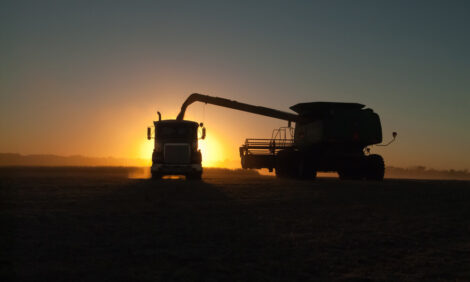



Retail Promotion Team Gets Fresh Ideas for US Beef, Pork in Latin America
LATIN AMERICA - Providing customers with new ideas for merchandising US pork and beef, USMEF hosted a team of retail buyers from Central America, South America, Mexico and the Caribbean for a “gate to plate“ tour of red meat production in Texas.Along with participation in the Annual Meat Conference in Dallas, the USMEF Retail Promotion Team also visited several retail outlets, toured a cattle ranch, a feedlot and a packing plant – and took part in Pork 101 and Beef 101 educational sessions at West Texas A&M University. Funding for the team’s activities was provided by the USDA Market Access Programme (MAP), the Texas Beef Council, the Pork Checkoff and the Beef Checkoff Programme.
Liz Wunderlich, USMEF representative in the Caribbean, said the goal was to give Latin American retailers fresh ideas on how to present and market US pork and beef in their home countries – thus increasing overall sales of US products.
“We took them first to the Annual Meat Conference as a sort of springboard for the team, which was made up of retail buyers and merchandisers,” said Ms Wunderlich.
“Instead of just going to supermarkets and packing plants, we added the conference to give them a look at the US retail perspective. There is a product showcase where US retailers unveil their latest and greatest retail products, and we wanted team members to see this and hopefully go back home to their businesses with new item ideas.”
Following the Annual Meat Conference, the team was given a closer look at the entire US red meat production chain in what Wunderlich described as a “gate to plate” tour.
Russell Woodward of the Texas Beef Council presented a merchandising seminar focused on tenderness and flavor of several underutilized cuts of US beef. From there it was on to the Amarillo area, where the team toured a Cargill plant in Friona and the C&R Land and Cattle Company in Happy. A dinner with the Jay Wade Johnson family and other area ranchers followed. Team members were interviewed during the ranch visit by a video crew producing a segment for the Texas Farm Bureau.
At West Texas A&M University, the team continued its deep dive into the US red meat industry by taking part in Pork 101 and Beef 101 sessions. The trainings offered breakdowns of individual cuts and explanations about the attributes of US pork and beef. The value and profitability of underutilized cuts were stressed.
“These retailers from all the Latin American countries really want to understand the process behind the products,” said Jessica Julca, USMEF representative in South America. “We were able to show them the US meat industry from production to processing to fabrication. When you add what they learned from the Texas Beef Council’s merchandising seminar and all the information about retailing at the Annual Meat Conference, it was very rewarding for them.”
Ms Julca, who hosted retailers from Chile in Texas, said USMEF’s effort is important, noting that the US continues to face strong competition in South America.
“Pointing out the advantages of US pork and beef is vital, including the US standards for food safety – and knowing what our customers in the region like is key in gaining more customers and selling more US product,” she said. “We want to defend and also expand our market share for new cuts and new products. One way to do that is to help retailers make new and better presentations of US pork and beef in their markets.”
Ms Wunderlich said the sessions were ideal for retailers looking for ways to promote US pork and beef in their stores and meat markets.
“We were able to demonstrate the difference between well-done and not well-done pork, and we let them taste the difference,” she said. “We had them sample the sarcomere-muscle fiber difference between biting into a pork tenderloin and biting into a sirloin. We explained the difference in the age of animals for beef – young animals, old animals, whether the meat had been aged or not aged, how much marbling it had and what impact that has, whether it’s been fed just grass or whether it’s been fed grain.”
Response from team members was positive.
“By the end of that week, we had demonstrated that there is a science behind our sizzle, and that USMEF provides support for them to be successful and profitable in their merchandising of high-quality US red meat,” said Ms Wunderlich.








